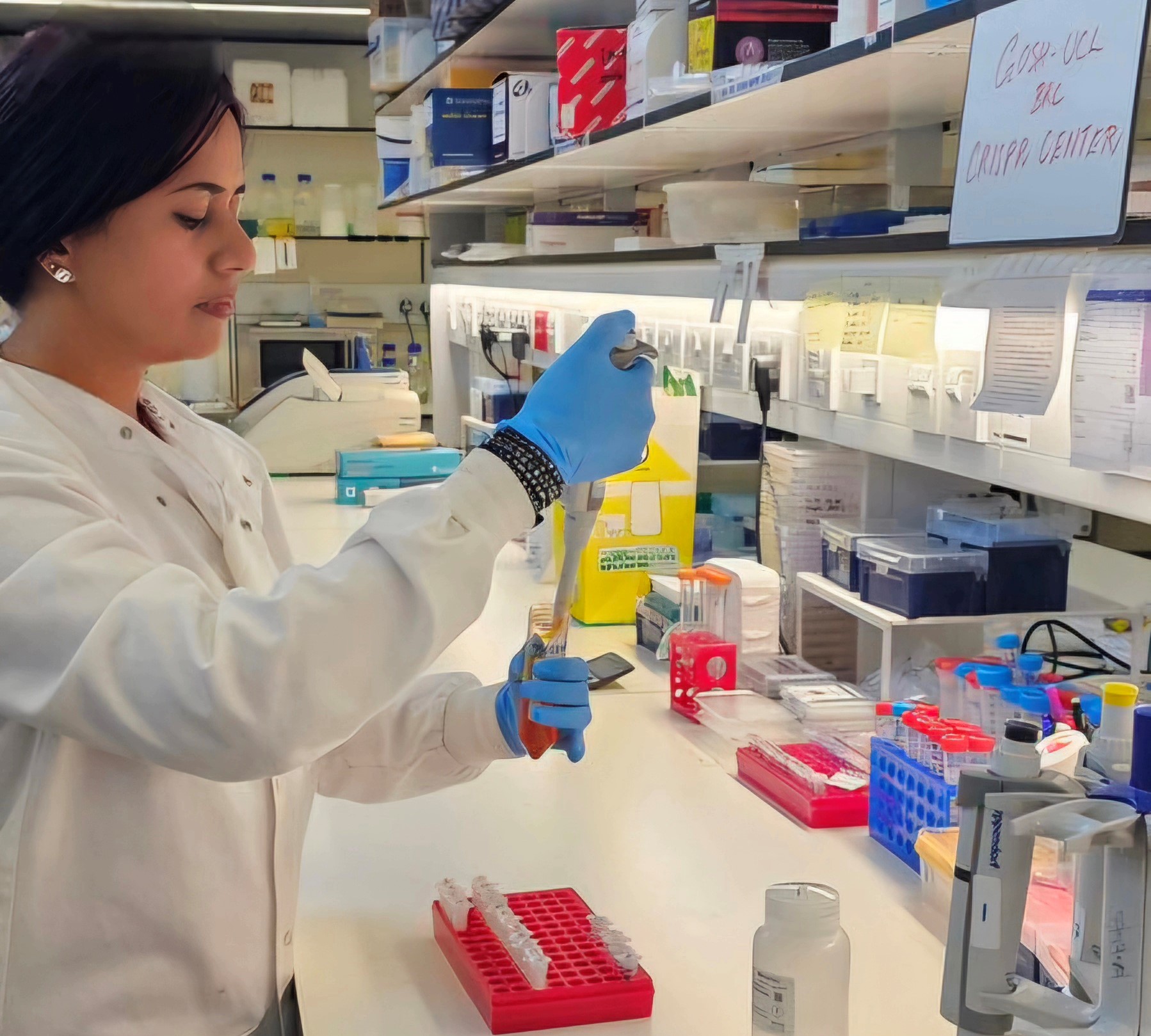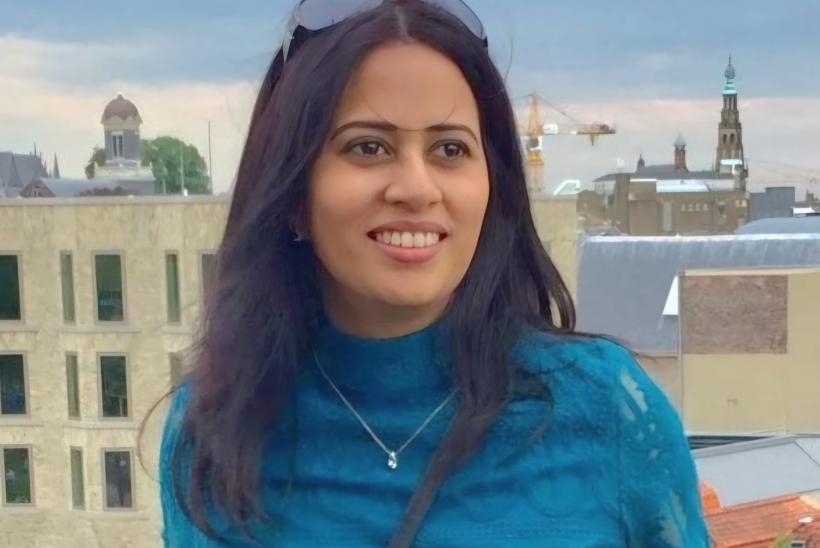Celebrating DNA Day- Inside the CRISPR Centre Shaping our Genetic Future
To mark DNA Day, we’re highlighting the work of a new specialist centre bringing together expertise from GOSH and University College London.
Over 20 years ago, GOSH pioneered the very first gene therapy and is still a leader in these therapies today. These treatments use the latest cutting-edge technology to edit or turn off genes as a way to target specific genes. For example, researchers know that the condition DTDS, also known as infantile parkinsonism-dystonia, is caused by mutations in the SLC6A3 gene, and are researching potential treatments.
One of the latest ways to edit genes to create treatments for disease is called CRISPR. This new technology can find and alter specific parts of DNA inside a cell, as well as turning genes on and off without changing their sequence.
The GOSH UCL CRISPR Centre combines our specialist skills, allowing more people to access gene edited therapies and hopefully research more genetic conditions to improve the treatment and care for patients across the world. To learn more about the centre, we spoke to Shalini Reddy, Lead for the GOSH UCL CRISPR Centre.
Why was the centre set up?
The CRISPR Centre was created to meet a growing need for rapid, accurate, and cost-effective gene editing within academic and clinical settings. Many labs struggle with the technical complexity, high costs, or delays when outsourcing gene editing projects. We set up the centre to change that, to build local capacity in GOSH and UCL, empower teams to generate their own disease models, and support discovery science that could translate into diagnostics and therapies. While rooted at GOSH-UCL, the centre was established to serve the wider research community. Today, we are already supporting nationwide collaborations and, on our way, to extending our impact globally. It also fosters collaboration, training, method development, and embeds next-generation gene editing technologies into our research infrastructure.
Please tell us about your role:
I lead the GOSH UCL CRISPR Centre, but my role is hands-on. I advise researchers and clinicians on the best ways to edit specific genes, create models of disease in the lab by editing health donor cells to study how they develop, or exploring new therapies. I also train staff and students, and work closely with our collaborators across the UK, making sure everything is done to a high standard. I want to make gene engineering more accessible, reproducible, and impactful in genetic and rare disease research, while creating a system that is ready for the future and can support gene editing for diagnosing treatments as well as creating new therapies.
Why is this work important?
Gene editing allows us to study disease at the most fundamental level by recreating or correcting variations directly in human cells. This precision helps us uncover mechanisms, find new targets for drugs, and even develop potential cures, especially for rare or neurodevelopmental conditions where traditional approaches struggle. The ability to edit cells donated directly by patients also bridges the gap between research and the clinic. We’re not just answering biological questions - we’re creating tools that could shape diagnostics and therapies. The work we do has the potential to transform outcomes for those who currently have few or no treatment options.
To find out more about the centre, please visit GOSH-UCL CRISPR Centre | Great Ormond Street Hospital.



